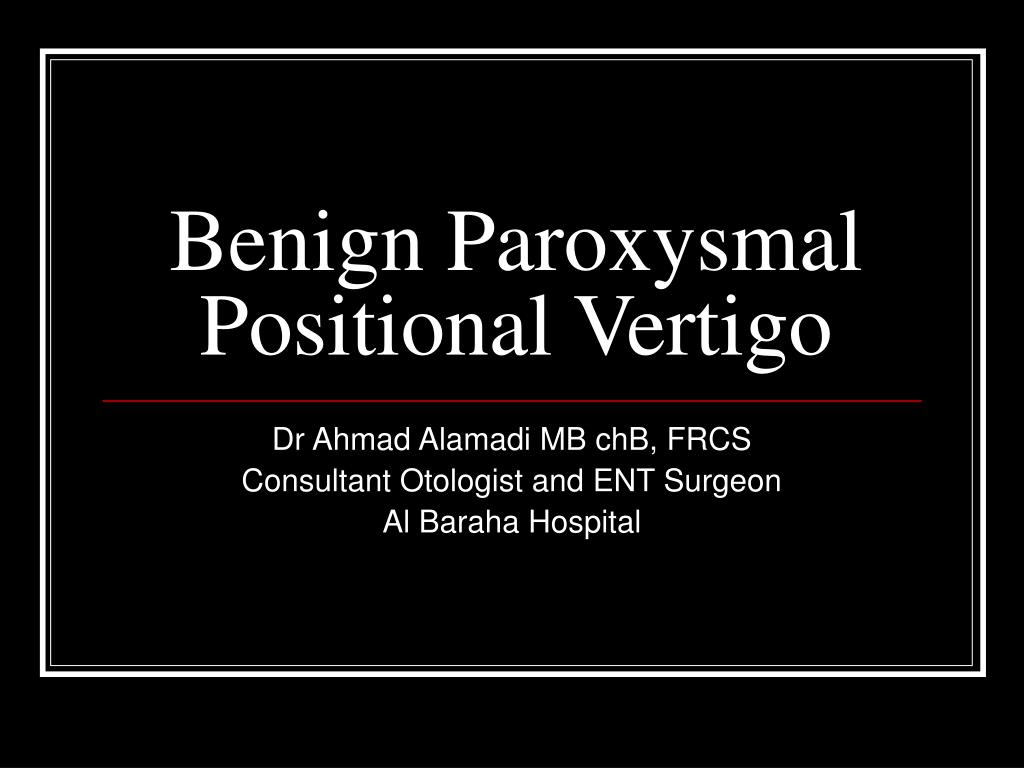

If all 4 results point to a peripheral cause, the overall HINTS plus examination is deemed “HINTS plus peripheral,” and suggests the patient likely has vestibular neuritis. 1 Each component of this examination can point to a peripheral or central cause for vertigo.
BENIGN PAROXYSMAL POSITIONAL VERTIGO SERIES
The HINTS plus examination is a series of 4 bedside tests: the type of nystagmus seen, test of skew, head impulse test and a test of hearing. The term plus refers to a test of recent hearing loss.) Our differential diagnosis was a posterior circulation stroke versus vestibular neuritis, and to differentiate them, we used a clinical examination known as “HINTS plus” (head impulse, nystagmus and test of skew. We did not observe any vertical nystagmus. On physical examination, we found no motor weakness or dysmetria. He also reported that he did not have face or limb paresthesia, focal weakness, dysarthria, dysphagia, diplopia or dysphonia. He reported that he did not have headache, neck pain or ear symptoms. It was difficult for him to perform tandem gait. He was able to walk unaided but felt unsteady. The vertigo persisted to a substantial degree even when the patient remained still, and it worsened with movements such as going from lying down to upright or rapid head turning. A follow-up telephone interview 2 weeks after the patient presented to the emergency department determined that he had not had any further dizzy episodes.Ī 49-year-old man presented to the emergency department with an ongoing, constant spinning sensation for 12 hours that was accompanied by multiple bouts of vomiting. Given his clinical presentation and his favourable response to the Epley maneuver, we discharged the patient home with no medication. This was consistent with a diagnosis of left posterior canal benign paroxysmal positional vertigo (BPPV), which can be best managed using the Epley maneuver (an author video showing this patient’s Dix–Hallpike test and a demonstration of the Epley maneuver is available at ).įifteen minutes after completion of the Epley maneuver, repeat Dix–Hallpike testing of the patient’s left ear found no vertigo or nystagmus. It became more vertical upward when his gaze was directed toward his upward right ear. The nystagmus was mostly rotatory, with the upper poles of his eyes beating toward his downward left ear. However, during testing of the left side and after a brief latency of 2 or 3 seconds, he had vertigo and nystagmus that lasted 15 seconds. The patient’s right-sided Dix–Hallpike test was normal, without vertigo or nystagmus. Because his vertigo was started by head movements and lasted less than a minute and he had no nystagmus, he was a good candidate for positional testing. In the sitting position, he did not have nystagmus while looking straight ahead (spontaneous nystagmus) or when asked to gaze left and then right (gaze-evoked nystagmus). On physical examination, we found no focal weakness, sensory deficit or dysmetria.

He did not have a headache, neck pain, decreased hearing, paresthesia in his face or limbs, visual field loss, dysarthria, dysphagia, diplopia or dysphonia. The intense vertigo resolved if he stayed still, but similar brief episodes recurred several times when he laid supine in the hospital. He came to the emergency department an hour later. Although lasting only 10–15 seconds, he became sweaty afterwards without nausea or vomiting. Case 1: benign paroxysmal positional vertigoĪt 4:00 am, a 71-year-old man turned over in bed onto his left side and experienced a sudden onset of dizziness, described as if the bed was moving.


 0 kommentar(er)
0 kommentar(er)
